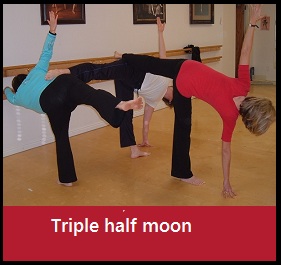The fifth yama or restraint is non-hoarding, non-greed or non-attachment. There is a balance that must be found between gratefully taking and receiving all that we need, and then letting go of everything else. We must abundantly nourish our body, mind and spirit, and at the same time not hang onto objects, thoughts, people, memories, desires that no longer serve us.
The breath is a perfect teacher of this balance.

Our own breath is our guide. Every released breath makes room for a new breath. At some point, we simply must let go of the old to make room for the new. Each time we exhale consciously, each time we intentionally release into savasana, each time we bring our awareness back to the breath—we are learning to be comfortable with letting go. Ideally then, we are also learning to let go of what we no longer need, in order to make space for the growth that matters the most to each of us.
The normal healthy body will take in just the right amount of breath for its needs. If the need is greater, our heart will speed up, our breath will become more like panting and thus the body receives more breath, more oxygen. But it does not hoard or hang onto more than it needs.
High emotional states like anxiety, grief or insecurity can bring the body into a state of breathing that is either too much or too little. And this means pain and discomfort for the body.
All of this balancing of oxygen needs is done without our conscious awareness. During a time of meditation and yoga, we can then explore consciously the breath and how our body always seeks to find the balance between abundance and releasing. Let’s learn from our breath about aparigraha.
A breathing meditation on aparigraha:
Find a quiet, comfortable spot, where you can be undisturbed for a few minutes. Close your eyes.
Bring your awareness to your breath. Do not judge your breath, just notice its length and depth without trying to change it.
On your next comfortable inhale, hold your breath. Hold it as long as you can possibly hold it. And when you think you can’t possibly hold it any longer, hold it a little longer.
Before the panic sets in, exhale. As your breathing comes back to its natural rhythm, notice what is different. Become aware of how quickly and efficiently the heart, lunges, breath seek to return to balance. Take some normal breaths.
Gently, but mindfully, try to make each exhale a little longer than each inhale. Notice how a complete exhale makes room for a natural inhale. Notice how letting go makes room for exactly what you need in the moment.
On your next exhale, keep pushing and exhaling until no more can be exhaled. Suspend the breath until the need is great, then relax and notice how air is pulled in filling the body’s greater desire. The taking of this bigger breath comes from the greater desire. Again notice how quickly and efficiently the heart, lunges, breath seek to return to balance.
Breath normally without conscious effort now for another minute.
The inspiration for this post comes from here



